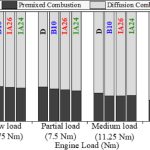Charge air coolers or scavenge air coolers are used to cool down the charge air, usually after supercharger or turbocharger compressor in diesel engines. In marine engines, the charge air temperature after the T/C compressor can rise up to 145-160 deg Celsius.
The increase in temperature of air is not at all a good thing for the efficiency of the plant, as efficiency increases proportionally with charge air density. Thus, this air needs to be cooled to the lowest possible temperatures, to increase the density of the air, and thus the efficiency of the plant.
The volume of air handled is so huge that the LT system of the ship ( central fresh water system ) cannot handle the heat transfer. A LT system which can cool the charge air supplied to ME needs huge plate coolers, which are not worth it. So, a conventional tube type cooler with sea water as cooling medium is used for this purpose. And please note that the lowest charge air temp here possible is also sea water temperature , which is always less than the LT temperatures.
Direct cooling using sea water onboard ships is used only in Main Charge Air coolers for Scavenging due to this.
Sea water is very corrosive and is not usually used for cooling other engine parts directly.
Boiler water treatment- What ph level to maintain??
Boiler water should be always alkaline, as acidic medium accelerates corrosion. only in a alkaline environment, steel will stay as steel in contact with water. Steel and water in touch is like petrol and matchbox together. Always they have huge affinity to each other. Acidic environment just lights the fire and ur boiler inside will start rusting, giving dark brown water when u take samples for tests.
Boiler water should be treated to a ph level of 9.5-11.5 as UNITOR, a big player in boiler treatment chemical market, recommends.
Alkalinity is normally maintained by adding sodium hydroxide, branded by different chemical companies in different names. UNITOR brands it as autotreat, VECOM brands it as BOILER TREAT, and so on…
Sodium hydroxide provides a highly alkaline environment in the boiler. This is about the only environment where water and steel get along well. Heat magnifies the normally corrosive effect water has on steel, since it speeds up chemical reactions. Maintaining the correct alkalinity range minimizes this highly corrosive effect of water. Alkalinity also plays a critical part in various chemical reactions in the boiler. Frequently, most of boiler water alkalinity comes from the addition of sodium hydroxide in the chemical program. Some of the alkalinity comes from naturally occurring alkalinity found in raw water supplies. If it is present naturally, it contributes to the required alkalinity in the boiler and decreases the amount of sodium hydroxide needed.



Comments are closed